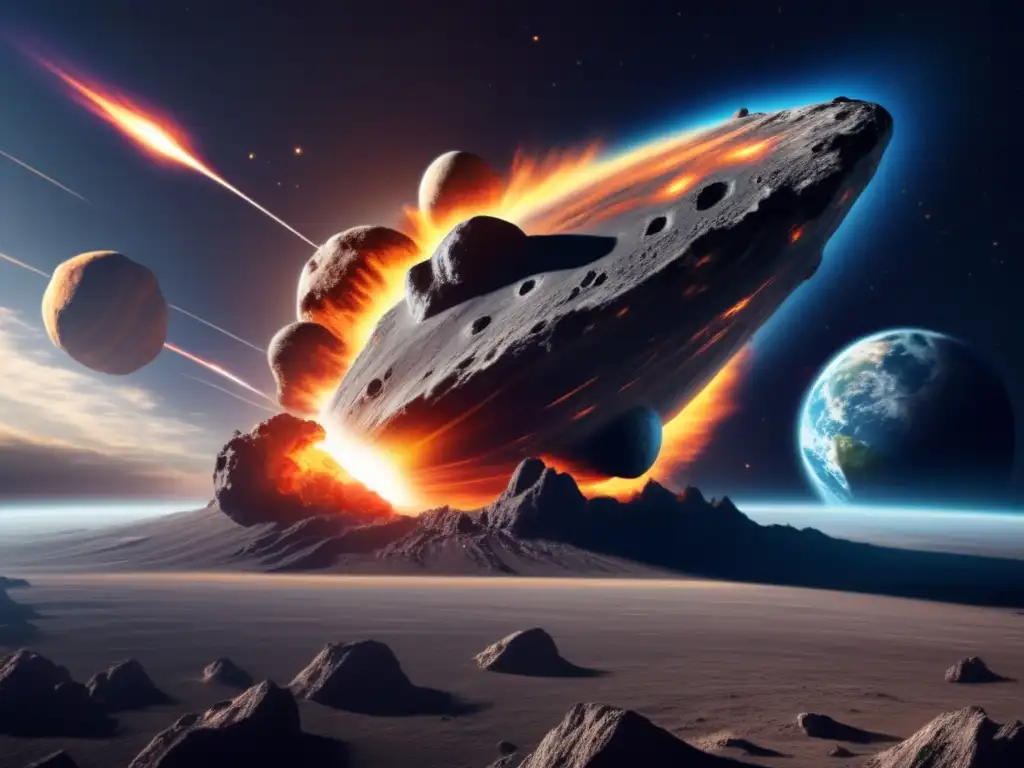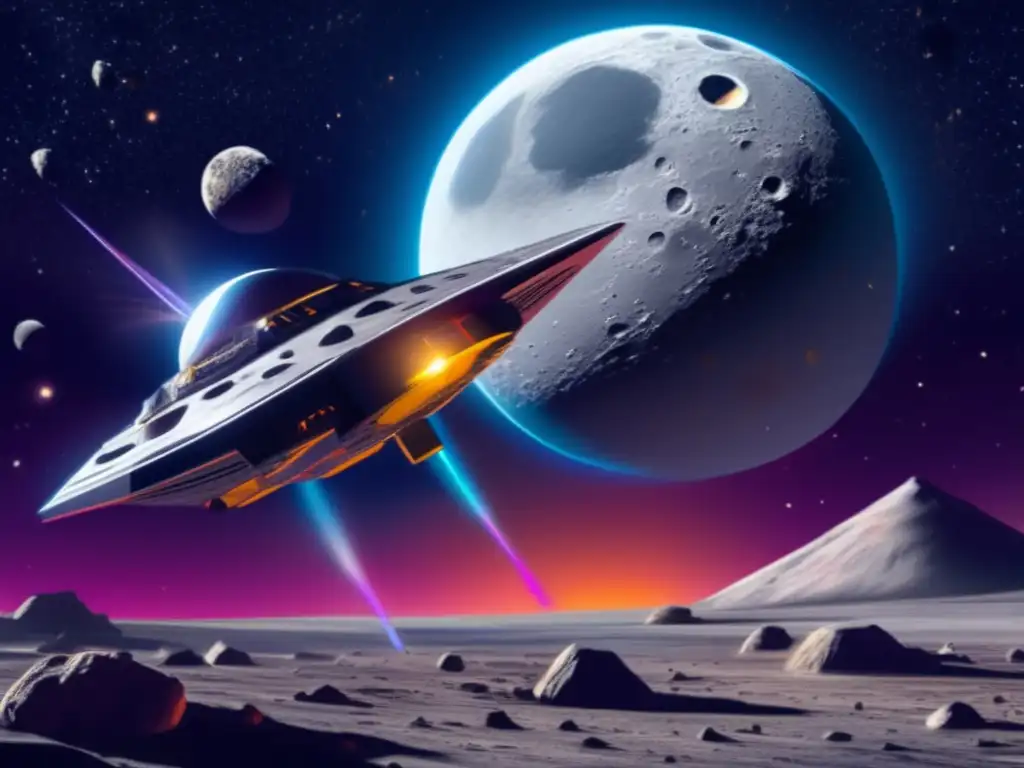The Final Hour: Predicting And Preparing For Asteroid Strikes

Introduction
Asteroid impacts have the potential to cause catastrophic damage to the planet. Scientists around the world are working tirelessly to predict and prepare for the next major asteroid event. In this article, we will explore the current state of asteroid detection and mitigation efforts, as well as the potential consequences of failing to adequately prepare for an asteroid strike.
Current Detection Systems

The Sentinel Mission
The Sentinel mission, led by the B612 Foundation, aims to launch a space telescope that will scan the solar system for asteroids that pose a threat to Earth. The telescope will be positioned in orbit around the sun and will track asteroids as they approach our planet. If an asteroid is found to be on a collision course with Earth, it will be tracked and its orbit calculated with high precision.
NASA's Planetary Defense Coordination Office
NASA's Planetary Defense Coordination Office is responsible for tracking potentially hazardous asteroids and developing strategies to mitigate the effects of a strike. The office works closely with international partners to coordinate detection and response efforts. In addition, it has developed an Asteroid Threat Assessment scale that ranks the potential impact of an asteroid on a scale from 0 to 10.
The Catalina Sky Survey
The Catalina Sky Survey, based at the University of Arizona, uses a network of telescopes to search for near-Earth objects (NEOs). Over the past two decades, the survey has discovered approximately half of all known NEOs. The data collected by the survey is used to determine the size, trajectory, and potential impact of NEOs.
Mitigation Strategies

Nuclear Explosives
Nuclear explosives have been discussed as a potential mitigation strategy for asteroid impacts. The idea would be to detonate a nuclear device near an incoming asteroid, which would either push it off course or break it apart. However, there are concerns about the potential fallout and the possibility that the explosion could create multiple smaller impactors.
Kinetic Impactors
A kinetic impactor is a spacecraft designed to collide with an asteroid in order to alter its course. The idea is to use the spacecraft's momentum to move the asteroid off course. NASA's Double Asteroid Redirection Test (DART) mission, scheduled for launch in 2021, will test this approach by colliding a spacecraft with an asteroid in order to change its orbit.
Gravity Tractors
A gravity tractor is a spacecraft designed to hover near an asteroid and use its gravitational pull to slowly alter the asteroid's course. This approach would require more time than other methods, but it would also be less risky in terms of potentially creating more impactors.
Impact Consequences

Direct Damage
The direct damage caused by an asteroid impact would depend on the size and velocity of the incoming object. Small asteroids could cause localized damage, while larger objects could cause widespread destruction. A massive asteroid impact could create tsunamis, fires, and a "nuclear winter" effect that could threaten global food supplies.
Environmental Impact
An asteroid impact could also have long-term environmental consequences. Dust and debris kicked up by the impact could block out the sun, leading to a drop in global temperatures. This could cause crop failures and lead to widespread famine. In addition, the impact could release large amounts of greenhouse gases, contributing to climate change on a global scale.
Global Economic Fallout
The economic impact of an asteroid strike would be significant. In addition to direct damage to infrastructure and property, the event could disrupt global supply chains and cause widespread economic instability. If the impact were severe enough, it could trigger a global recession or depression.
Frequently Asked Questions

-
Can asteroids be destroyed?
Asteroids cannot be destroyed, but they can be diverted from their collision course with Earth through various mitigation strategies.
-
Do all asteroids pose a threat to Earth?
No, most asteroids do not pose a threat to Earth. Only a small percentage of asteroids are considered to be "potentially hazardous."
-
How much warning would we have before an asteroid impact?
The amount of warning would depend on the size and trajectory of the asteroid. In general, scientists would have at least a few months' notice before a potential impact.
-
What is the likelihood of a major asteroid impact in the near future?
The likelihood of a major asteroid impact is low, but not zero. Scientists estimate that there is a one-in-a-million chance of a civilization-ending impact in any given year.
-
What should I do if I hear about a potential asteroid impact?
If you hear about a potential asteroid impact, stay informed by following news updates. If an impact is imminent, follow the advice of local authorities and seek shelter in a sturdy building or underground.
Conclusion
Asteroid impacts are a serious threat to the planet, but scientists and researchers around the world are working hard to prevent a catastrophic event. Through improved detection systems and mitigation strategies, we can minimize the risk of an impact and protect our planet for future generations. It is important that we stay informed and engaged with these efforts to ensure a safe and prosperous future for all.
Thank you for taking the time to read this article. We welcome your thoughts and comments in the section below.
Additional Resources

For more information on asteroids and impact mitigation strategies, check out these resources:
 Small But Mighty: The Power Of Micro Asteroid Impacts
Small But Mighty: The Power Of Micro Asteroid Impacts A New Day: The Earth's Renewal Post Asteroid Impact
A New Day: The Earth's Renewal Post Asteroid Impact Cosmic Strikes: The Effect Of Asteroid Impacts On Lunar And Earth Surfaces
Cosmic Strikes: The Effect Of Asteroid Impacts On Lunar And Earth SurfacesIf you want to discover more articles similar to The Final Hour: Predicting And Preparing For Asteroid Strikes, you can visit the Asteroid Impacts category.
Leave a Reply

Articulos relacionados: